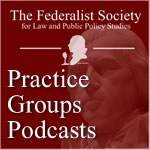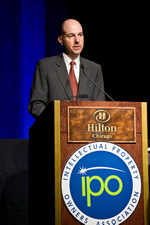The US Court of Appeals for the Federal Circuit ruled in favor of Roche in a longstanding patent-infringement dispute with Stanford University regarding ownership of PCR-based test kits for the HIV virus. Board of Trustees of the Leland Stanford Junior University et al. v. Roche Molecular Systems et al. (09 2008-1509, -1510).
Earlier, a district court held that the claims of U.S. Pat. Nos. 5,968,730, 6,503,705 and 7,129,041 are invalid for obviousness. Now, the Federal Circuit has ruled that the ruled that Stanford did not have standing to file suit against Roche because it didn’t own the patents in the first place. The court determined that Roche owned the patents and so vacated the district court’s judgment of invalidity and remanded with instructions to dismiss Stanford’s action.
The patents-in-suit claim methods for quantifying Human Immunodeficiency Virus in human blood samples, and correlating those measurements to the therapeutic effectiveness of antiretroviral drugs. The claimed methods use the polymerase chain reaction (PCR) to measure ribonucleic acid (RNA) from HIV in the blood plasma of infected humans who are taking drugs such as zidovudine (AZT). Stanford first sued Roche in 2005, looking for more than $200 million for infringement of the three patents.
The technology related to the patents was developed by researchers at Stanford and Cetus and the collaborations between Stanford and Cetus included a series of written agreements signed by Stanford researcher Mark Holodniy, one of the inventors on the patents, who collaborated with Cetus on the development of the test kits. Holodniy had signed a “Copyright and Patent Agreement” with Stanford that required him to assign his inventions to the university, but then later signed a conflicting “Visitor’s Confidentiality Agreement” with Cetus that required him to assign to the company any inventions that resulted from the collaboration.
During the same period, Cetus also collaborated with inventors Merigan and Katzenstein to develop a separate HIV treatment. Merigan, Stanford, and Cetus signed multiple “Materials Transfer Agreements” that permitted Stanford to use certain PCR-related materials and information supplied by Cetus. These agreements provided Cetus with licenses to technology that Stanford created as a result of access to Cetus’s materials.
Eventually, researchers determined that HIV RNA, measured through PCR, was a suitable “marker” of drug efficacy. These results formed the basis for the patents-in-suit. In1992, Stanford filed an invention disclosure for the HIV RNA assay with the NIH and confirmed to the Government the grant of a “nonexclusive, nontransferable, irrevocable, paid-up license” under the parent application.
The district court granted Stanford’s motion in part, finding that (1) Roche’s ownership claims were barred by California statutes of limitation, laches, and the Bayh-Dole Act; (2) Roche’s license claims failed because Stanford never consented to Roche’s acquisition of Cetus’s patent licenses; and (3) Roche lacked shop rights to the patents.
Roche moved for summary judgment that the asserted claims were invalid. The district court granted the motion, holding all asserted claims obvious. The district court said that the applicable California statutes of limitation and the doctrine of laches foreclosed Roche’s counterclaim for a judgment of ownership, and that such determination was fatal to Roche’s ownership and standing defenses.
The Federal Circuit didn’t wholly agree:
While we agree with the district court that the statutes of limitation preclude Roche from obtaining a judgment of ownership, we do not agree that such determination prevents Roche from asserting Stanford’s lack of ownership of Holodniy’s interest as a defense and a challenge to Stanford’s standing to maintain its action against Roche.
Holodniy signed the CPA with Stanford, which recites: “I agree to assign or confirm in writing to Stanford and/or Sponsors that right, title and interest in . . . such inventions as required by Contracts or Grants.” The court said this wasn’t enough:
We have held that the contract language “agree to assign” reflects a mere promise to assign rights in the future, not an immediate transfer of expectant interests…. Therefore, in the CPA, Holodniy agreed only to assign his invention rights to Stanford at an undetermined time.
But, Holodniy signed the VCA with Cetus, which recites: “I will assign and do hereby assign to CETUS, my right, title, and interest in each of the ideas, inventions and improvements.” This somehow made the agreement “different” from the one with Stanford:
In contrast to the CPA, the VCA’s language of “do hereby assign” effected a present assignment of Holodniy’s future inventions to Cetus. E.g., Speedplay, Inc. v. Bebop, Inc., 211 F.3d 1245, 1253 (Fed. Cir. 2000) (interpreting “shall belong” as a present assignment); FilmTec Corp. v. Allied-Signal, Inc., 939 F.2d 1568, 1572-73 (Fed. Cir. 1991). Therefore, Cetus immediately gained equitable title to Holodniy’s inventions.
Cetus’s equitable title converted to legal title no later than the parent application’s filing date. However, because Cetus’s legal title vested first, Holodniy no longer retained his rights, negating his subsequent assignment to Stanford during patent prosecution.
Stanford argued that it was a bona fide purchaser but that also fell short. Stanford contends that it purchased Holodniy’s rights through his 1995 assignment of the parent application for “good and valuable consideration,”that Cetus and Roche never recorded their interests with the Patent and Trademark Office, and that Stanford received no notice of Holodniy’s countervailing assignment to Cetus.
While a good attempt, the court refused to buy this argument:
However, Stanford’s argument fails because there can be no genuine dispute that Stanford had at least constructive or inquiry notice of the VCA. … Therefore, Stanford’s claim that it remained ignorant of the VCA until shortly before the current litigation is inconsequential.
The nomination process for the 2010 inductees into the IP Hall of Fame is now open. The IP Hall of Fame honours those who have made an outstanding contribution to the development of IP law and practice. Devised and developed by leading IP publication Intellectual Asset Management magazine, it identifies individuals who have helped to establish intellectual property as one of the key business assets of the 21st century.



